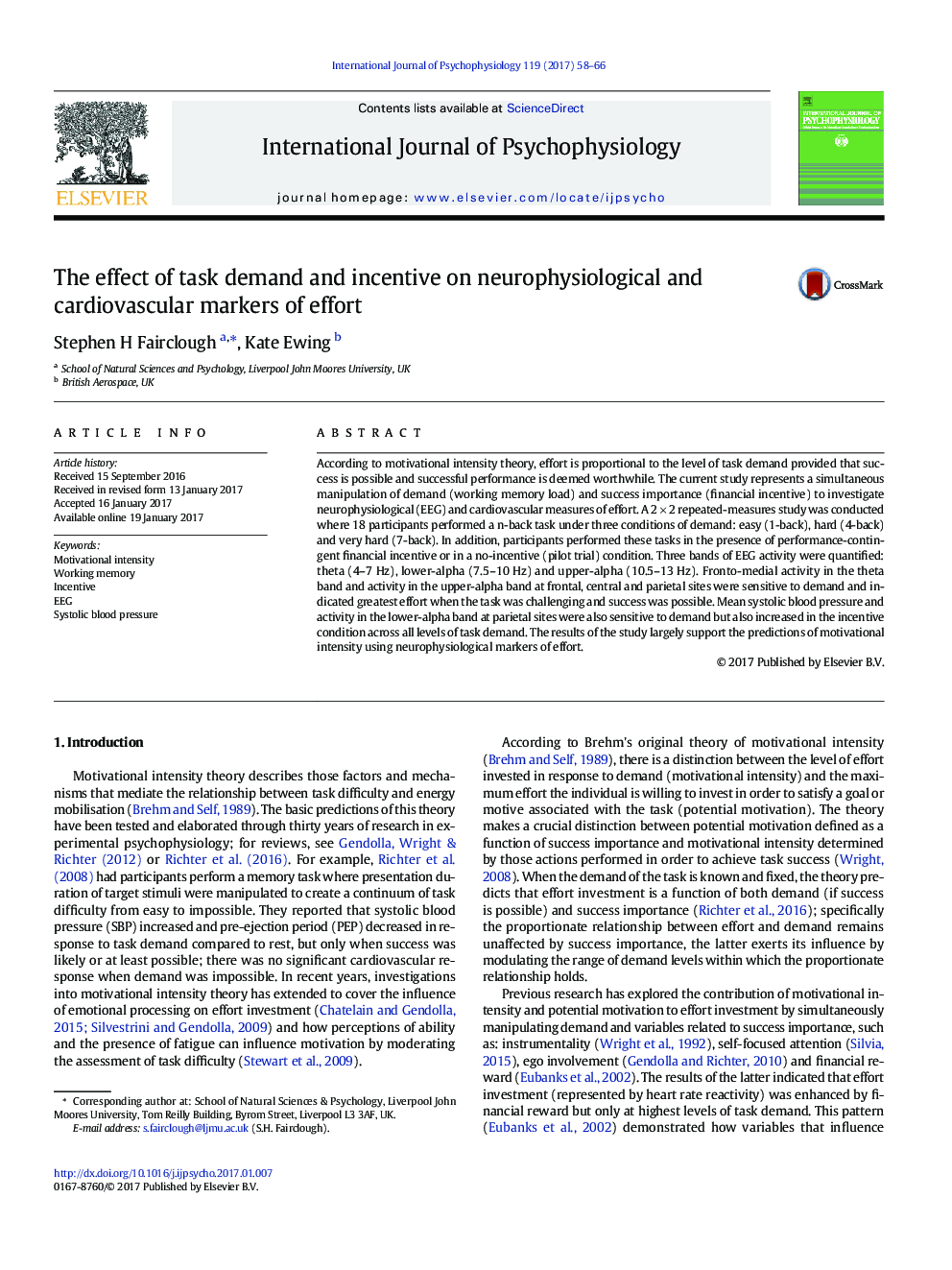| کد مقاله | کد نشریه | سال انتشار | مقاله انگلیسی | نسخه تمام متن |
|---|---|---|---|---|
| 5042275 | 1474377 | 2017 | 9 صفحه PDF | دانلود رایگان |
- Frontomedial theta exhibited a curvilinear relationship with task demand.
- Parietal alpha in lower-band exhibited a curvilinear relationship with demand.
- Parietal alpha in lower-band decreased in the presence of incentive.
- Parietal alpha in upper-band exhibited a curvilinear relationship with demand.
- Systolic blood pressure was sensitive to both demand and incentive.
According to motivational intensity theory, effort is proportional to the level of task demand provided that success is possible and successful performance is deemed worthwhile. The current study represents a simultaneous manipulation of demand (working memory load) and success importance (financial incentive) to investigate neurophysiological (EEG) and cardiovascular measures of effort. A 2Â ÃÂ 2 repeated-measures study was conducted where 18 participants performed a n-back task under three conditions of demand: easy (1-back), hard (4-back) and very hard (7-back). In addition, participants performed these tasks in the presence of performance-contingent financial incentive or in a no-incentive (pilot trial) condition. Three bands of EEG activity were quantified: theta (4-7Â Hz), lower-alpha (7.5-10Â Hz) and upper-alpha (10.5-13Â Hz). Fronto-medial activity in the theta band and activity in the upper-alpha band at frontal, central and parietal sites were sensitive to demand and indicated greatest effort when the task was challenging and success was possible. Mean systolic blood pressure and activity in the lower-alpha band at parietal sites were also sensitive to demand but also increased in the incentive condition across all levels of task demand. The results of the study largely support the predictions of motivational intensity using neurophysiological markers of effort.
Journal: International Journal of Psychophysiology - Volume 119, September 2017, Pages 58-66
